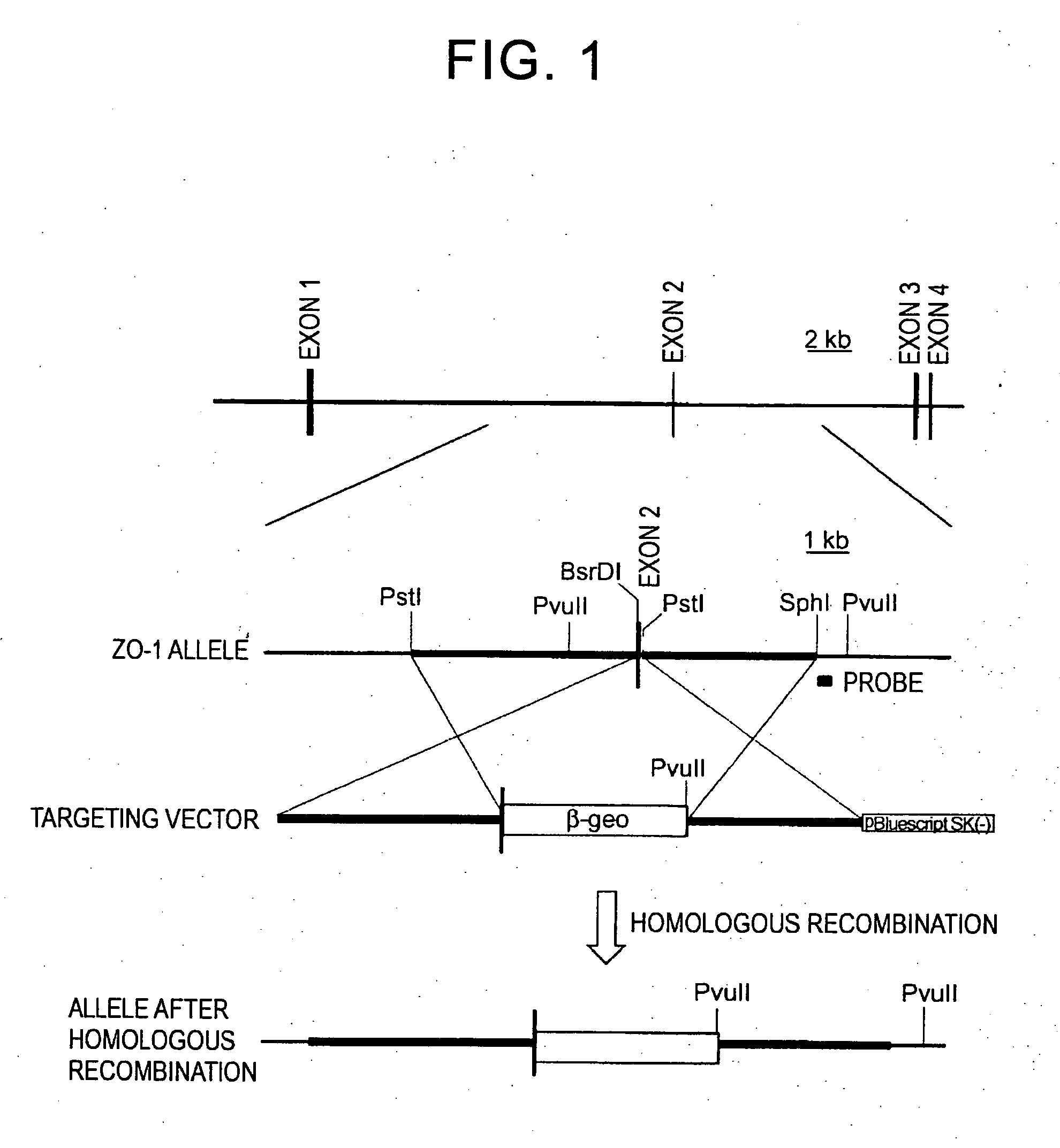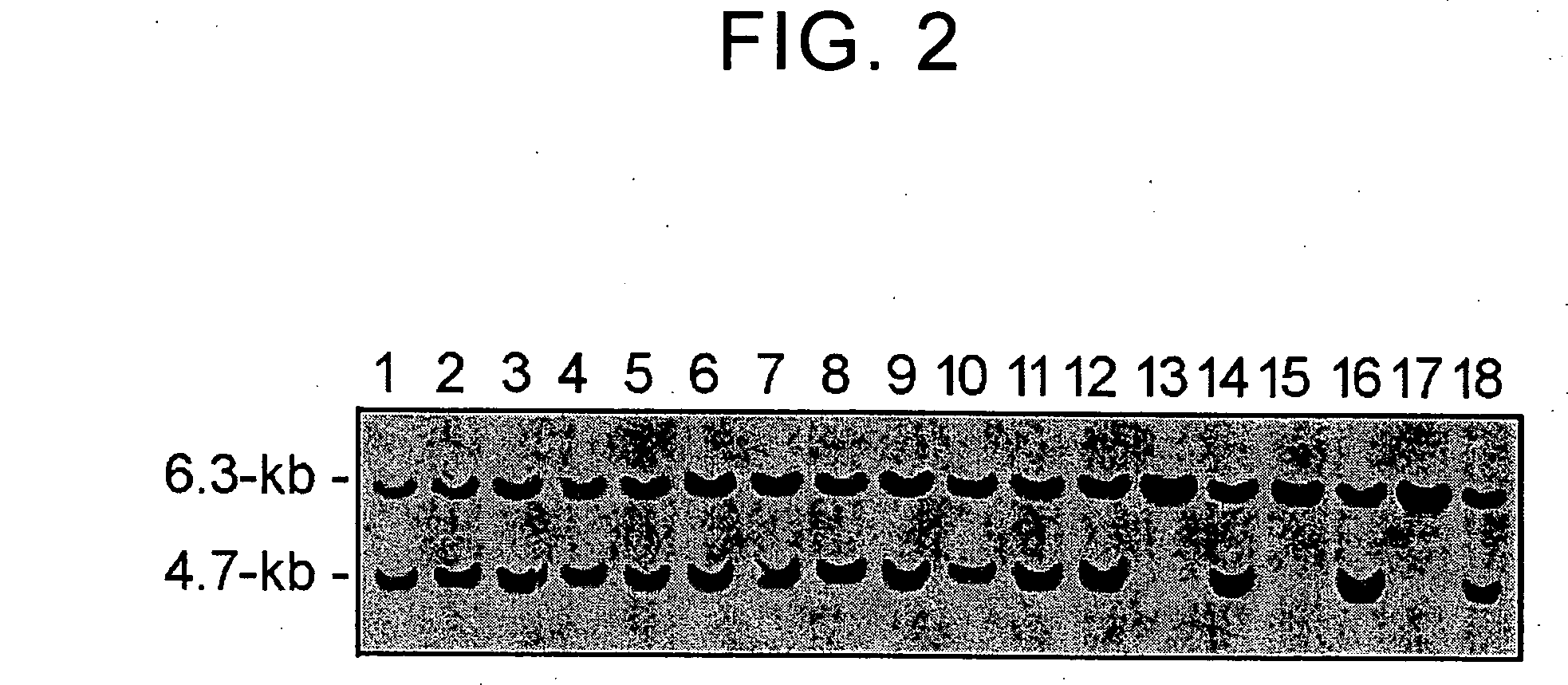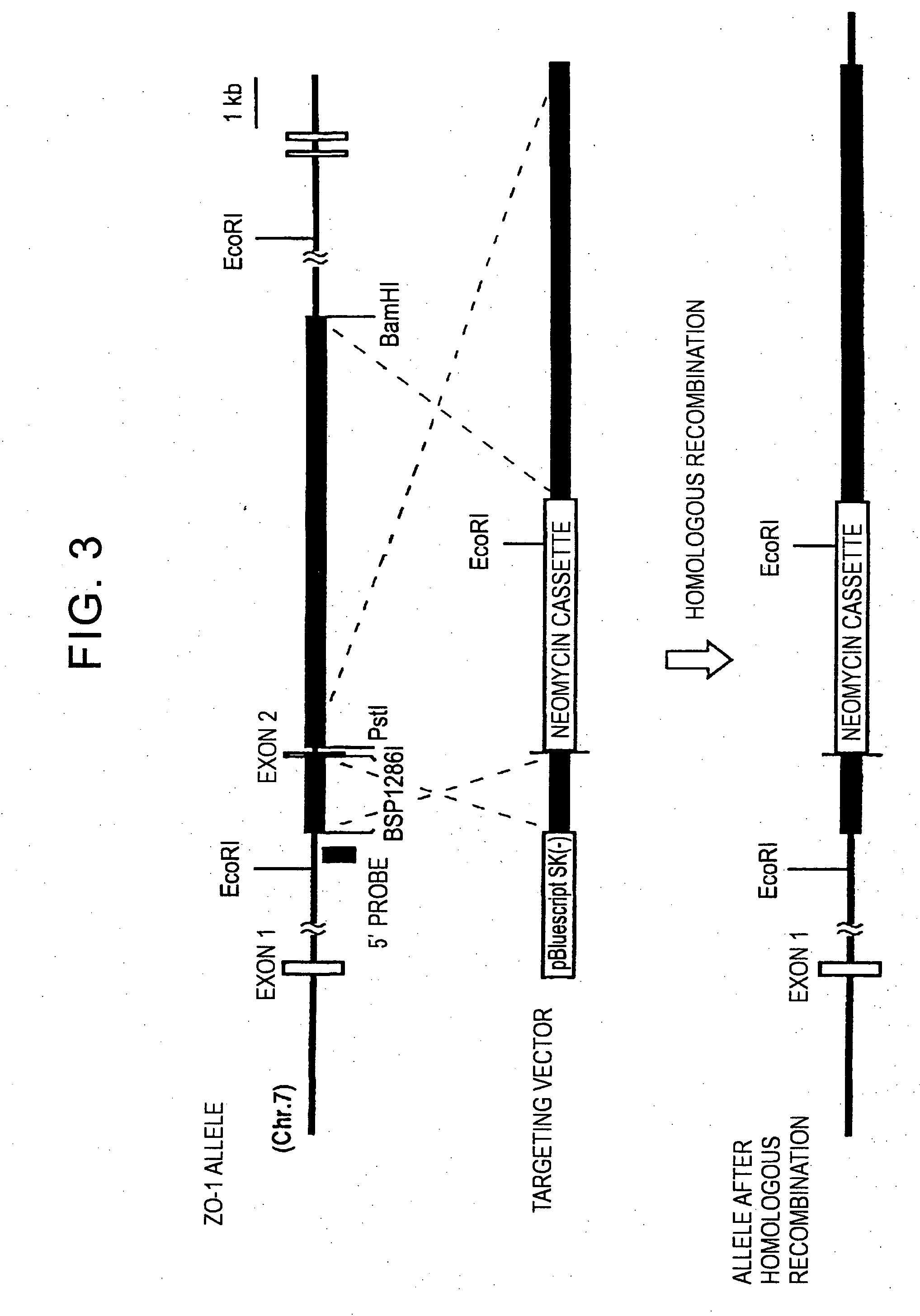Highly efficient gene targeting vectors and methods for gene targeting method forward epithelial cell line
- Summary
- Abstract
- Description
- Claims
- Application Information
AI Technical Summary
Benefits of technology
Problems solved by technology
Method used
Image
Examples
example 1
Construction of Various Highly Efficient Targeting Vectors
(1) Construction of the ZO-1 targeting vector
[0090] To obtain a genome comprising ZO-1, 129 / Sv mouse genomic λ phage library was screened using a mouse ZO-1 cDNA probe, and four overlapping genomic fragments were obtained. Mouse ZO-1 genomic locus was determined by restriction enzyme mapping and DNA sequencing (FIG. 1). A genomic fragment comprising the ZO-1 gene was obtained. The genomic fragment consisted of four exons. The initiation codon was located in exon I.
[0091] The ZO-1 targeting vector was designed so that a portion of exon II is removed. This vector contains β-geo (in the order of lacZ, neo, and polyA) as a cassette. A 5.1 kb PstI-BsrDI fragment containing a portion of exon II and its upstream was ligated to the upstream of the above cassette, and a 3.9 kb PstI-SphI fragment located downstream of exon II was ligated to the downstream the above cassette (FIG. 1). With the use of this targeting vector, a region ...
example 2
Gene Targeting
[0095] The ZO-1 targeting vector was linearized at the unique SacII site located at the 5′ end of the 5′ homologous region fragment. The vector thus linearized was used for gene transfer into ES cells (7-8 passages) by electroporation using the Gene Pulser (Bio-Rad Laboratories). These ES cells were cultured on feeder cells in a standard medium for 36-48 hours, and then cultured for an additional 7-13 days in a medium containing G418 (175 mg / ml). G418 resistant colonies were isolated and screening was carried out by Southern blotting using a genomic fragment (290 bp) that corresponds to the outside of the 3′ homologous region fragment. In clones that have undergone correct homologous recombination, when their genome is digested with PvuII, a 6.3 kb fragment could be seen from the wild type allele and a 4.7 kb fragment could be seen from the allele replaced by homologous recombination (FIG. 2). Among the 176 G418-resistant clones, 167 clones were found to have undergon...
example 3
Investigation of Electroporation Conditions for Gene Targeting
[0097] In order to develop gene targeting methods for the EpH4 mouse epithelial cell line, conditions for electroporation were examined using the efficient ZO-1 targeting vector (targeting vector comprising the 1.5 kb and 8.5 kb fragments) described in Example 1.
[0098] The mouse ZO-1 gene targeting vector was linearized at the unique XhoI site located at the 3′ end of the 3′ homologous region fragment (FIG. 3). This DNA (10 μg) was introduced into the EpH4 mouse epithelial cell line (1×107 cells) cultured in a low Ca2+ (5 μM) medium for 12 hours, by electroporation using the Gene Pulser II system (Pulse Controller PLUS) from BioRad Laboratories under different conditions of voltage, condenser capacity, and such. Following the introduction, cells were cultured in a standard medium for 48 hours and selected after 14 days of culturing in a G418-containing medium (0.4 mg / ml). As a result, differences in the number of G418 r...
PUM
| Property | Measurement | Unit |
|---|---|---|
| Fraction | aaaaa | aaaaa |
| Molar density | aaaaa | aaaaa |
| Electric potential / voltage | aaaaa | aaaaa |
Abstract
Description
Claims
Application Information
 Login to View More
Login to View More - R&D
- Intellectual Property
- Life Sciences
- Materials
- Tech Scout
- Unparalleled Data Quality
- Higher Quality Content
- 60% Fewer Hallucinations
Browse by: Latest US Patents, China's latest patents, Technical Efficacy Thesaurus, Application Domain, Technology Topic, Popular Technical Reports.
© 2025 PatSnap. All rights reserved.Legal|Privacy policy|Modern Slavery Act Transparency Statement|Sitemap|About US| Contact US: help@patsnap.com



